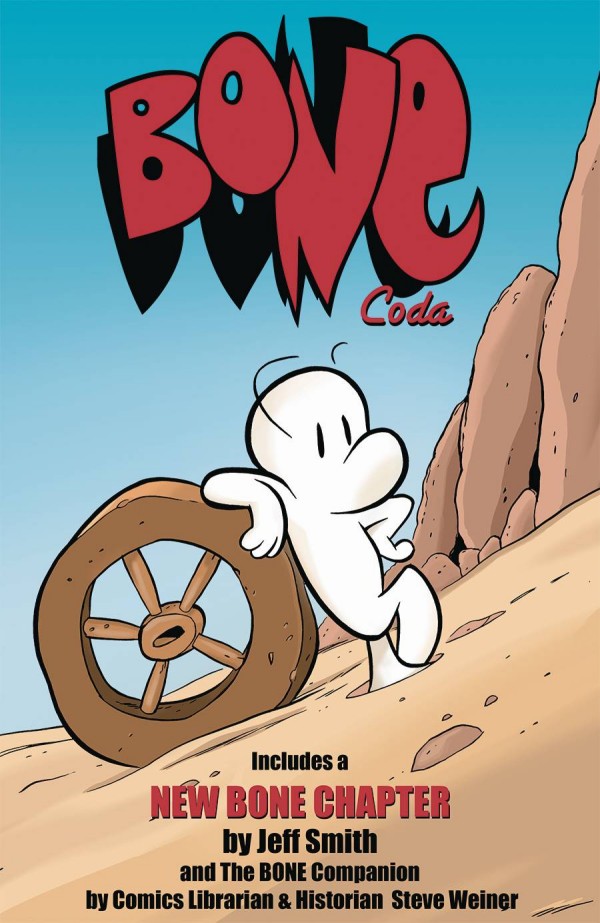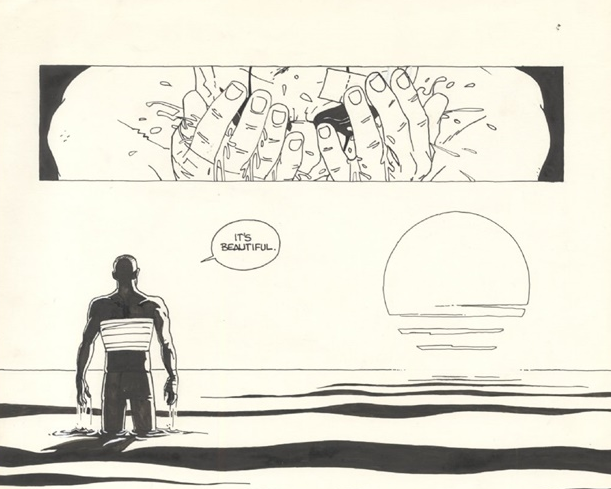
Broken World #1 (of 4)
Written by Frank Barbiere
Illustrated by Christopher Peterson
Colored by Marissa Louise
Lettered by Ed Dukeshire
Boom! Studios
"It's the end of the world as we know it, and I feel fine." - REM
There's an asteroid heading towards Earth and somehow, the world has come together sufficiently to build Ark ships that can carry 75% of the world's population someplace else. 75%! That's great, except that based on the world's current population, that's still 1.75 BILLION* people left behind. So, you know, not so great for them. That's the hook for the exciting new miniseries Broken World from writer Frank Barbiere, with art from Christopher Peterson, colors from Marissa Louise and letters by Ed Dukeshire. The first issue is dramatic and provides an interesting ground-level look at the way that such an impending disaster might affect humanity.
Barbiere throws us right into mere weeks before the impending asteroid impact. Elena Marlowe is a college professor who's trying to make certain that she gets into the ships that are leaving Earth, and she'll do anything she can to leave, including procure a fake ID. Not everyone gets to flee Earth, and it seems like there's been some sort of combination of a lottery system and screening out people who don't have "clean records" in order to reduce the number of people that'll make their way into space to be saved. Society is understandably falling apart, a some people (a religious group) choose to face the apocalypse head on by embracing the use of government-approved suicide kits. But the world keeps on moving, Elena keeps trying to live her life by teaching her classes at university. But the climactic moment comes when she tries to board the ship with her son and boyfriend, and let's just say things don't go well for her. This issue is full of interesting twists and surprises.

This is an engaging comic that left me immediately wanting to find out what happens next. In disaster movies, whether they're about meteors (Armageddon, Deep Impact), aliens (War of the Worlds), or climate change (The Day After Tomorrow), there's a conscious choice that the creators can make, whether to focus on the government or other high-level folks trying to solve the problem, or decide instead to tell a ground-level story about how this disaster is impacting regular people. Barbiere takes the latter choice for the most part and it works well. There are no scenes of laboratories or government or military offices where people try to solve the problem. Instead, the story focuses on the impact that both this impending disaster and the choice of the people in power have on the "regular people" impacted by those decisions.
We're meant to understand that, at least according to what we've been told, this asteroid was expected to hit the earth and wipe out humanity, but people were able to come together in a way sufficient to build enough ships to evacuate a vast majority of the Earth's population. If that's true, then it's a real spot of optimism in an otherwise sad story as we watch people accept (or not accept) the end of the world. Nowadays, where people can't even deal with the impact that our actions have on the environment, it's comforting to think that humanity could come together to produce big solutions to big problems. So, while I'm skeptical of the idea that humanity could actually solve that big of a problem, I'd love to think that it's possible.
We're meant to understand that, at least according to what we've been told, this asteroid was expected to hit the earth and wipe out humanity, but people were able to come together in a way sufficient to build enough ships to evacuate a vast majority of the Earth's population. If that's true, then it's a real spot of optimism in an otherwise sad story as we watch people accept (or not accept) the end of the world. Nowadays, where people can't even deal with the impact that our actions have on the environment, it's comforting to think that humanity could come together to produce big solutions to big problems. So, while I'm skeptical of the idea that humanity could actually solve that big of a problem, I'd love to think that it's possible.

What I'm also struck by in reading this story is the way that the creative team has effectively used the art to create the specific atmosphere of the story. Most of humanity has already left, and the some people will get to leave, but most of the remainders won't. This sense, of impending doom, of abandonment, of the beginnings of a societal breakdown, it's all terrifically conveyed by the artistic team here, nice touches. The world feels lonely, from an empty quad area, to a classroom with five kids in it. Louise's colors really contribute to this feeling, particularly in exterior shots where we see the impending asteroid. It looms larger than life in the sky, and it feels like we're looking at something almost supernatural, something that shouldn't exist, it should be there, and yet it is. Looming over everything in these last days. The colors of the asteroid are bright, almost oppressively so, and the reddish tint to the sky gives everything a weird glow that makes one feel that the end of days are nearby. But scenes at home contrast strongly with this feeling; they give the impression of people trying very hard to maintain their humanity and sense of routine in the midst of impending disaster. It's a very specific mood, and the art captures it well.

This is a strong debut issue and I'm very curious to see where the the story goes. For a compelling book where the end of the world is just the beginning, take a look at Broken World.






